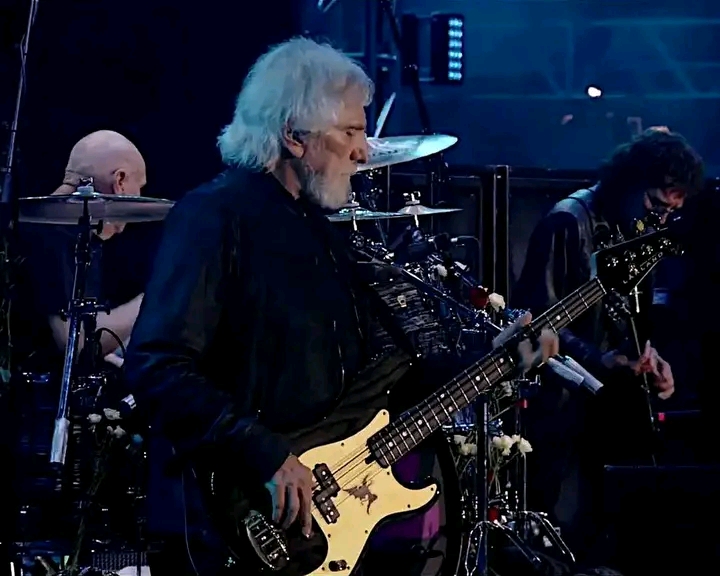
The Forgotten Farewell: Why This Jake E. Lee-Era Album Remains Hated and Underrated
Often dismissed as one of the weaker entries in Ozzy Osbourne’s otherwise legendary discography, The Ultimate Sin (1986) remains a polarizing chapter in the Prince of Darkness’s career. Despite being a commercial success, achieving platinum status and spawning the hit “Shot in the Dark,” the album has endured decades of mixed reactions, mostly due to its polished production, glam-metal aesthetic, and deviation from the raw power fans had come to associate with Ozzy’s earlier solo work. But with time comes reflection, and for a growing number of fans, The Ultimate Sin is finally being reevaluated as the misunderstood gem it truly is — an album that not only showcased the incredible, and often underrated, guitar work of Jake E. Lee but also marked the end of an important era in Ozzy’s turbulent but triumphant career.
The Glam Metal Stigma
In the mid-1980s, metal was changing. The gritty, doom-laden tones of the early ’80s were being replaced by more commercially viable sounds — slicker production, flamboyant wardrobes, and pop-influenced hooks. Bands like Mötley Crüe, Ratt, and Poison dominated MTV, and even the heaviest acts were being nudged toward a more radio-friendly sheen. Ozzy, whether by design or label pressure, leaned into this trend with The Ultimate Sin. As a result, many fans felt alienated by its glam-metal leanings, particularly the glossy production from Ron Nevison, who had worked with Heart and Survivor. The raw chaos of Blizzard of Ozz and Diary of a Madman seemed far away.
But The Ultimate Sin wasn’t without its grit. Beneath the sheen was a collection of songs with serious bite — “Secret Loser,” “Never Know Why,” “Lightning Strikes,” and the title track carry real weight, both lyrically and musically. Unfortunately, the sound of the times — gated reverb on drums, synth-laden backdrops, and overly layered vocals — led many to write it off as “sell-out” material, rather than seeing it as an artist adapting to a changing landscape.
Jake E. Lee: The Unsung Hero
At the heart of The Ultimate Sin is Jake E. Lee, a guitarist whose contributions to Ozzy’s music often go overlooked. Having first appeared on 1983’s Bark at the Moon, Lee brought a unique style to Ozzy’s band — a mix of neo-classical flair, bluesy bends, and high-octane riffage that bridged the gap between the flamboyance of Randy Rhoads and the later technical wizardry of Zakk Wylde.
On The Ultimate Sin, Lee truly spread his wings. His riff on “Killer of Giants” is haunting and powerful, slowly building into one of the most emotionally resonant songs in Ozzy’s catalog. “Shot in the Dark” — the album’s biggest hit — features one of Lee’s most infectious riffs, even though the track itself has long been mired in controversy due to disputes over songwriting credits. Jake’s solos throughout the album are fiery yet tasteful, never descending into mindless shredding. If Ozzy’s voice carried the pain and passion of the lyrics, Jake’s guitar gave them wings.
It’s worth noting that The Ultimate Sin was the last studio album Jake E. Lee would record with Ozzy. Tensions with management, songwriting disputes, and shifting creative directions would see Lee unceremoniously dropped from the band, a move that still draws criticism from fans who feel he never received the credit he deserved.
Lyrical Depth and Darkness
While the album may be remembered for its glam sheen, its lyrics are often darker than critics give credit for. Songs like “Killer of Giants” touch on themes of war and destruction, while “Secret Loser” dives into self-doubt, addiction, and the internal conflicts of a man who, despite fame and fortune, can’t escape his demons. “Thank God for the Bomb” is a biting piece of satire on nuclear deterrence, and the title track is a hellish ride through guilt, temptation, and societal collapse.

These aren’t lightweight topics — and when paired with Lee’s dynamic guitar work and Ozzy’s haunting vocals, they form a potent mix that deserves more respect than it often gets.
The Ozzy Osbourne Perspective
Perhaps one reason The Ultimate Sin remains in the shadows is that Ozzy himself rarely speaks fondly of it. In fact, it’s one of the few albums in his solo career that has gone through long periods of being out of print, largely due to his own dissatisfaction with the production. He’s referred to it as “soulless” in interviews, and has said he felt disconnected from the recording process. When an artist publicly distances themselves from a piece of work, fans often follow suit.
But art is subjective, and the meaning of an album can evolve over time. Many modern listeners, particularly younger fans digging into Ozzy’s back catalog, are discovering The Ultimate Sin without the bias of its original reception. For them, it’s a fascinating time capsule — one that captures a transitional moment in metal and in Ozzy’s own evolution as a performer.
Legacy Revisited
As of today, The Ultimate Sin remains something of a paradox: it’s a platinum album that rarely gets celebrated, a record full of standout tracks that rarely make live setlists, and a pivotal turning point in Ozzy’s career that rarely gets its due. But that’s changing.
More and more musicians cite Jake E. Lee as an influence. Vinyl reissues and digital rediscoveries have brought new ears to the album. And for fans willing to listen without the baggage of genre expectations or production trends, The Ultimate Sin reveals itself to be far more than a forgotten glam experiment. It’s a farewell of sorts — to Jake E. Lee, to an era of flamboyant rock, and to a version of Ozzy Osbourne that was still finding his footing post-Sabbath.
In the end, The Ultimate Sin may never top the polls or win retrospective awards. But for those who know, it stands as a flawed, fiery, and fiercely unique entry in the Ozzy Osbourne saga — and one that finally deserves a second chance.




